Why is My Calathea Plant Drooping? Key Reasons and Solutions
Calathea is a loved houseplant due to its fancy leaves, painted patterns, and excellent air-cleaning properties. It can be tricky to care for, but the plant will tell you exactly when something is wrong with it.
Droopy leaves are red flags, especially after you have repotted them. They are the plant’s cry for help. The main reasons for “Why is Calathea Plant Drooping?” usually indicate the plant’s stress. This could be due to overwatering, underwatering, inappropriate lighting, or temperature changes.
In this guide, we will walk you through the reasons that cause your leaves and stems to become droopy and how you can fix those problems with routine care.

Main Reasons Why Is My Calathea Drooping?
Calatheas are sensitive to changes in their environment and show it quickly when stressed or not getting something they need. There are multiple reasons why your Calathea might be drooping. These include:
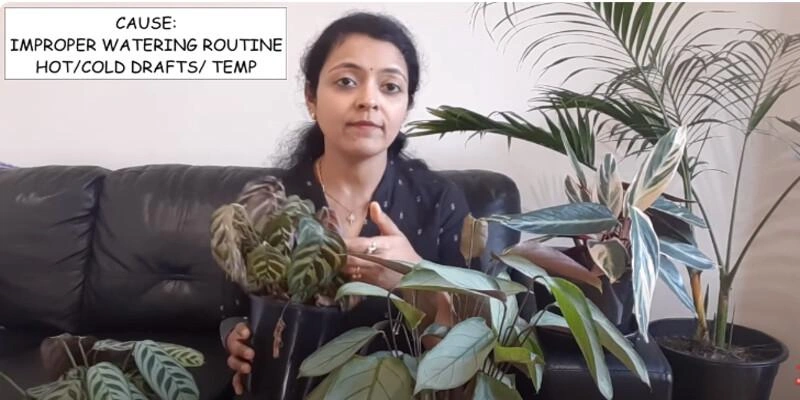
1. Water Issues: Overwatering & Underwatering
Water issues such as overwatering or underwatering are the common reasons your Calatheas might be drooping.
When you overwater your Prayer pant, its roots become soggy and unhealthy and suffocate if the soil is wet. Such soggy soil attracts bacteria and fungus to the wet Calathea, causing the plant to droop and root rot.
Similarly, underwatering also causes the leaves to droop. This occurs because the cells in the foliage lose their water content and cannot support the leaf enough.
In addition, inferior-quality water can also make the plant’s leaves droopy. Chemicals like chlorine and fluoride in tap water can build up in the soil and upset the roots, causing curly or wilted leaves.
Also check How Often and When to Water Calathea?
2. Low Humidity Levels
Calathea hails from hot countries, so it needs enough humidity to survive. These plants usually soak up enough water with their vibrant, broad leaves.
When the humidity is low, the leaves stop soaking up moisture, which causes the plant to dry out. This results in droopy, faded, and curling leaves.
Low humidity is tricky to spot in Calatheas, as both underwatering and low humidity levels cause curled, crunchy, droopy, and browning leaves.
3. Extreme Temperatures
Extreme temperatures are another reason your plant produces droopy leaves.
Calathea thrives best when the temperature is between 65°F and 75°F. But wild temperature swings can hurt these plants by producing wilted or saggy leaves and leaves with browning tips or edges.
Calatheas can handle hot conditions if the temperature stays below 80°F and enough humidity is present. Similarly, a temperature below 60°F stresses the plant, and below 50°F, the plant will eventually die.
4. Rootbound and Repotting Shock
Why is my Calathea drooping after repotting?
When your Calathea outgrows its pot, the roots take over the soil and become rootbound. A Calathea with twirling roots needs more space, but there is no room for water or nutrients due to outgrown roots. As a result, its leaves will begin to droop, and the plant’s growth will drastically slow.
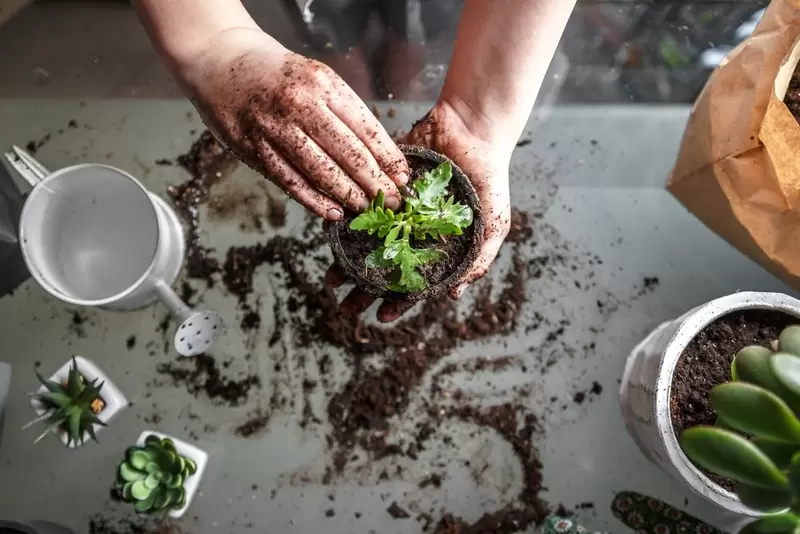
Similarly, repotting also stresses your plant, whether it is rootbound or not. A change in potting mix, pH, light level, humidity, and temperature causes the plant to become shocked. The plant will stop taking nutrients and water from the soil due to the sudden change in its surroundings and growing conditions.
This results in many problems like yellowing, drooping, and wilting leaves.
5. Inadequate Lighting
Prayer plants love soft, bright, and indirect light to thrive best. However, too much sun or direct sunlight can lead to bunt leaves. Similarly, if your plant is not getting adequate light, its leaves may wilt or curl.
Inadequate lighting, such as low light levels, causes the soil to become soggy, as water doesn’t evaporate and stays for a long time. This stagnant water harms the plant and its growth.
6. Dusty Leaves
Over time, dust accumulates on the leaves of your Prayer plant. This causes the foliage temperature to rise and stops leaves from photosynthesizing. Also, leaves cannot absorb water from the air around the plant.
This means your Calathea is not getting enough water or sunlight to maintain its growth rate, eventually causing the leaves to curl and droop.
7. Pest and Disease Infestations
Pest and disease infestations can also cause your plant to droop. Pests like Calathea spider mites, mealybugs, and scale bugs suck the juice from the leaves and cause them to limp and limp.
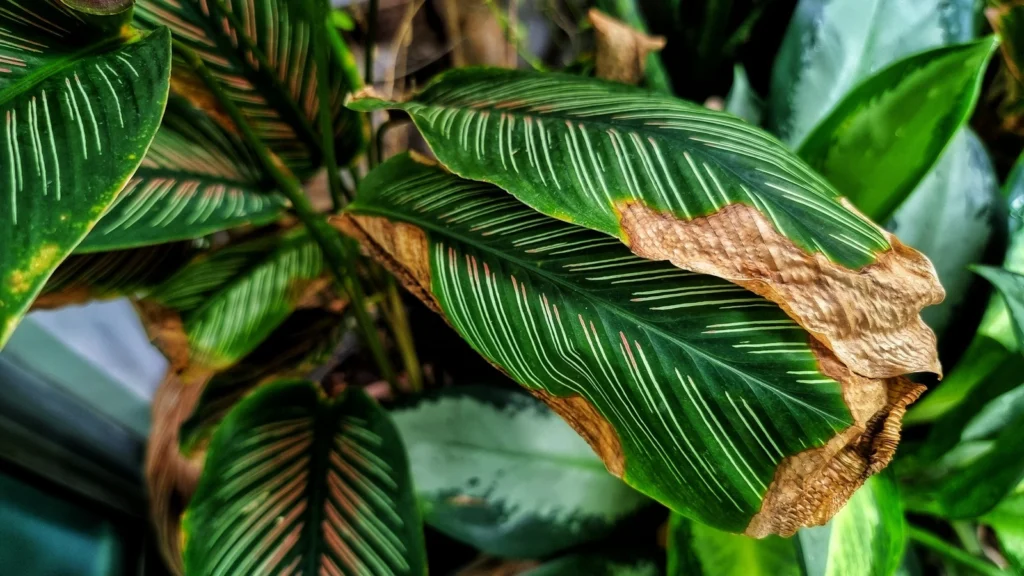
Similarly, diseases like fungal attacks can also affect plant health and cause Calathea leaves to droop and curl. If the roots are black and mushy, rot is probably to blame for your plant’s weary leaves.
Solutions Alleviating Calathea Drooping
Here are the solutions to the problems causing Calathea drooping.
1. Fix Overwatering and Underwatering
As discussed earlier, water issues are the leading causes of Calathea’s droopy leaves. Here is how you can adjust water issues.
How to Fix Overwatering?
You can fix overwatering by:
How to Fix Underwatering?
You can fix underwatering by:
This is how you can fix watering issues and revive your plant to a vibrant life.
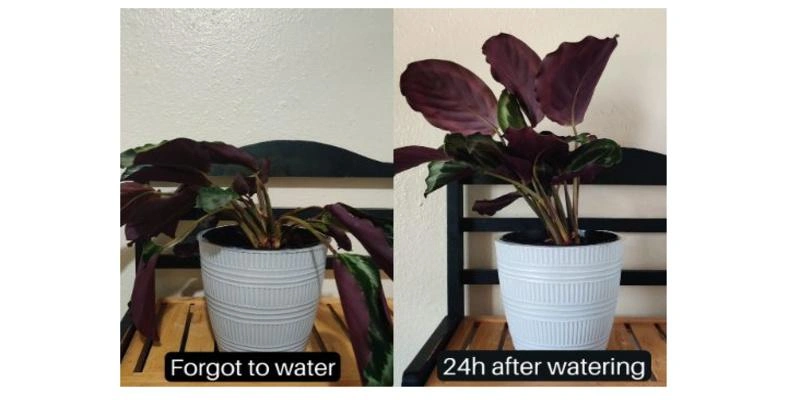
2. Optimize Lighting and Temperature
To sort out lighting and temperature problems:
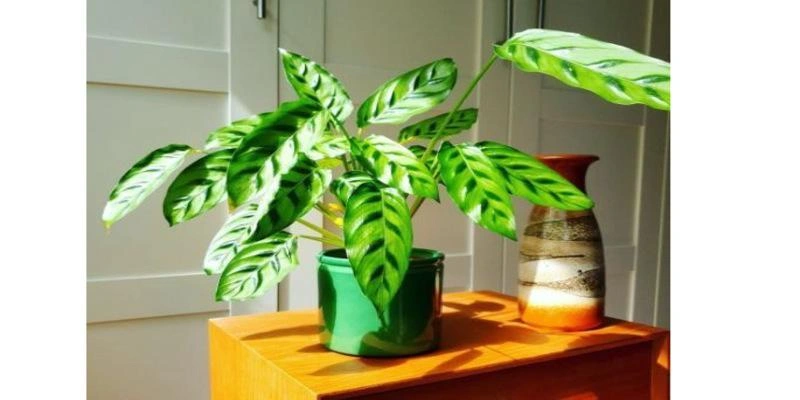
3. Increase Humidity
Calatheas like humidity of 60% or more. You can check the moisture using a humidity gauge and identify humidity-related issues.
To sort out humidity issues:
4. Reduce Repotting Shock
To fix stress after repotting:
5. Fix Bugs and Disease Problems
To fix bugs and disease problems:
Care Tips for Preventing Droopy Leaves of Calathea Plant
Here are some care tips to follow to stop your Calathea from drooping.
Establish a Constant Care Routine
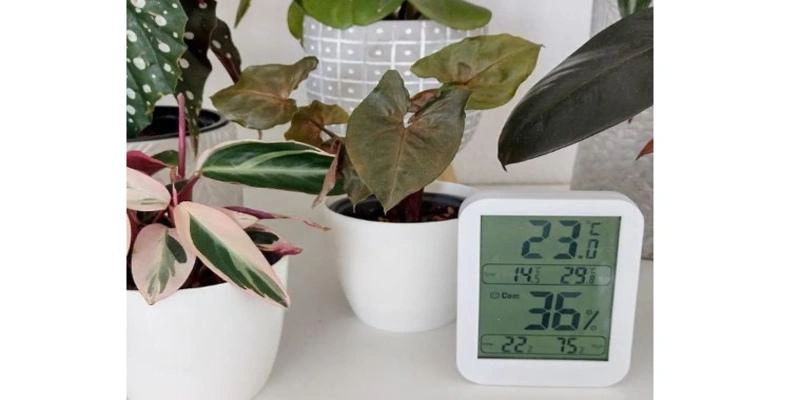
Regular maintenance is best to keep your Calathea healthy. Like clockwork, inspect your indoor plant for early signs of distress. Preemptive adjustment can be a big difference between perky and droopy Calathea.
Ensure an Ideal Growth Environment
Ensuring an ideal growth environment can do wonders for your tropical buddy. You can do this by:
By following preventive measures, you can stop your Calathea from drooping and keep it healthy and bright.
Conclusion | Why is Calathea Plant Drooping
Your Calathea can become droopy for various reasons, such as improper watering, low or too much direct sunlight exposure, insufficient humidity, temperature extremes, and pest and disease attacks.
To prevent droopy leaves in your tropical beauty, provide an ideal growth environment, such as adequate lighting, moist soil, the proper humidity levels, avoiding temperature extremes, and using good-quality water. These care tips help you make your Calathea look bright and lively.

About Author
Hi, I’m Emily Davis, a passionate tropical plant enthusiast dedicated to sharing knowledge and expertise with plant lovers. Through his blog, I will provide guides, tips, and tricks for caring for tropical houseplants species like Alocasia, Anthurium, Calathea, Philodendron, Begonia, and many more that will help readers bring a touch of paradise into their own homes. With a deep love for the vibrant colors and lush textures of tropical flora, I’m committed to inspiring others to cultivate their own tropical oasis.

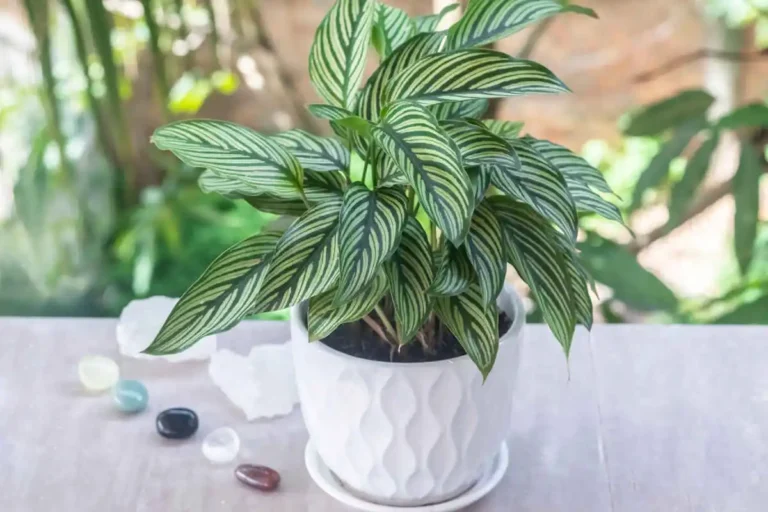
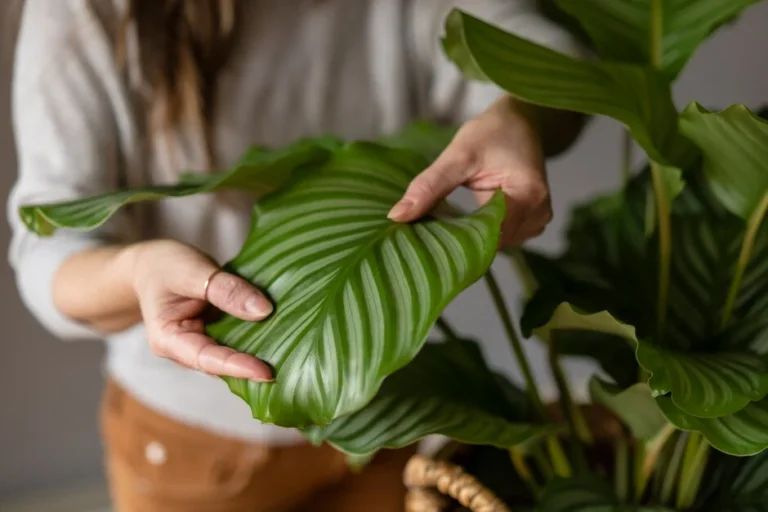



![Types of Calathea Plants: 25 Varieties to Grow Indoors [with images] 14 Calathea](https://tropicalplantscare.com/wp-content/uploads/2025/04/Calathea-2-768x576.webp)